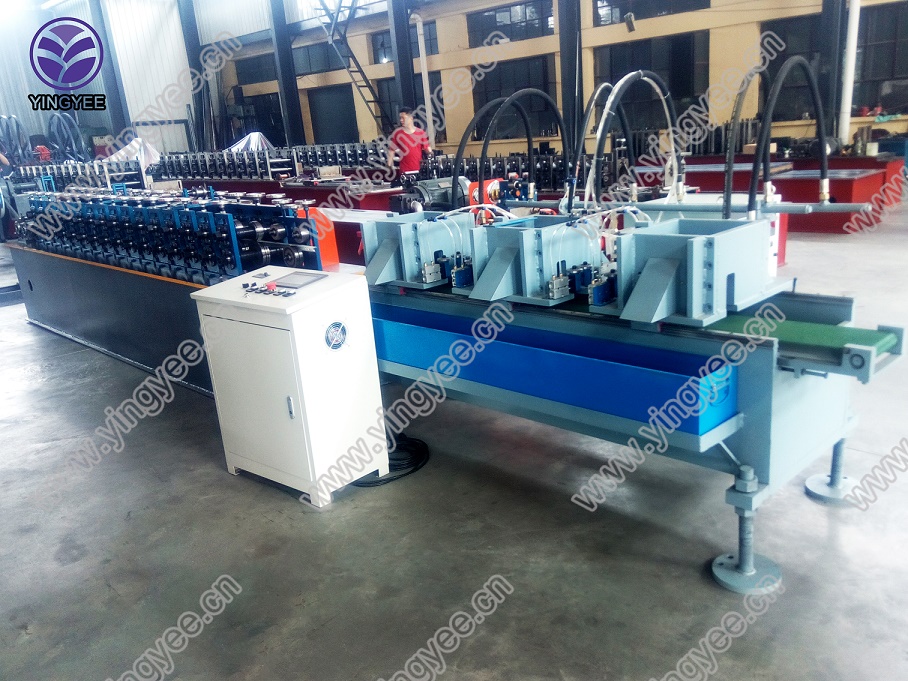
The Advancements in Steel Downpipe Roll Former Making Machines
In the realm of manufacturing, efficiency and precision are paramount. Steel downpipes, which are integral components of building drainage systems, have seen considerable advancements in manufacturing technology, particularly through the use of roll forming machines. Steel downpipe roll former making machines play a crucial role in streamlining production processes, ensuring that building materials meet the required specifications, and effectively managing material waste.
What is a Steel Downpipe Roll Former Making Machine?
A steel downpipe roll former is a sophisticated piece of machinery designed to convert flat steel sheets into finished downpipes. The process involves several stages, starting with the unwinding of flat steel coils, followed by the roll forming process, cutting, and finally bending the formed pipes into the desired shape. This machine allows manufacturers to produce downpipes with consistent dimensions and surface finishes, which are essential for both structural integrity and aesthetic appeal.
The Roll Forming Process
The roll forming process is characterized by its ability to shape metal through a series of consecutive passes through rollers. Each pass gradually bends the metal into a specific shape. The initial stage involves feeding a flat steel coil into the machine, where it is then fed through sets of rollers. Each roller progressively bends the metal until it reaches the desired profile of a downpipe. The precision of this machinery ensures minimal waste, as the continuous feed of the coil permits longer production runs without interruptions.
Key Features of Modern Roll Forming Machines
Modern steel downpipe roll former making machines are equipped with various advanced features that enhance their productivity and efficiency. These include
1. Computer Numerical Control (CNC) CNC technology allows for the precise control of the roll forming process. Operators can easily program the machine to create different shapes and sizes of downpipes, adapting to specific project requirements.

2. Automatic Cutting As the downpipe reaches its required length, an automatic cutting system ensures that the finished product is accurately cut, reducing errors and improving turnaround times.
3. Material Handling Systems Many machines are equipped with advanced material handling systems that reduce manual labor and enhance safety. These systems automate the feeding and stacking of pipes, further streamlining the production process.
4. Durability and Low Maintenance Manufacturers design modern roll forming machines with high-quality materials, ensuring long-lasting performance and reducing the need for frequent maintenance. This durability translates to lower operational costs over the machine's lifespan.
Applications of Steel Downpipes
Steel downpipes are extensively used in residential, commercial, and industrial buildings for effective rainwater drainage. Their robustness makes them suitable for environments exposed to varying weather conditions. The corrosion resistance of galvanized steel downpipes ensures longevity, making them a preferred choice among builders and architects.
Environmental Considerations
With the current emphasis on sustainability, the use of steel downpipe roll former making machines aligns well with eco-friendly manufacturing practices. The precision of the roll forming process minimizes material wastage, and the recyclability of steel contributes to a reduced environmental footprint. Moreover, advancements in technology have led to more energy-efficient machines, further benefiting the planet.
Conclusion
The evolution of steel downpipe roll former making machines reflects the growing need for efficient and high-quality manufacturing processes in the construction industry. These machines not only enhance production efficiency but also contribute to the sustainability goals of modern construction practices. As the industry continues to innovate, we can expect these machines to incorporate even more technological enhancements, positioning them as vital components in the future of construction manufacturing. The integration of such advanced machinery ensures that builders can provide reliable and durable drainage systems, safeguarding our structures against the elements.